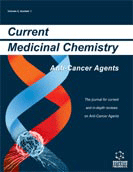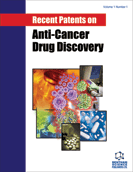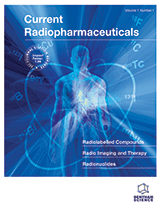Abstract
The genomic era has shifted anticancer drug development from its traditional mode concentrated on natural product cytotoxic agents to mechanism-based drug design focused on signal transduction pathways. Yet traditional cytotoxic chemotherapies continue to have an important role in the armamentarium. This is particularly true when one considers that important elements of solid tumor physiology - acidosis and hypoxia - have rarely been incorporated into algorithms for anticancer drug development. It is now well established that a majority of solid tumors exist in an acidic and hypoxic microenvironment that promotes resistance to radiation and chemotherapies apart from any drug-induced target mutations or efflux protein pumps. The acidic extracellular environment leads to a pH gradient unique to tumor cells. This gradient will favor uptake and retention of small molecule drugs that are weak acids. The converse is true for weak bases. The camptothecin class of topoisomerase I inhibitors is one example of a natural product cytotoxic that can exploit the tumor pH gradient. Screening of compounds based on selective activity at acidic pH (pH modulation), rather than potency, reveals analogs that are over ten times more active under the acidic conditions prevalent in vivo. Thus, knowledge of the tumor metabolic phenotype gained at the beginning of the 20th century can lead to more effective anticancer drugs in the new millennium.
Keywords: anticancer drug development, metabolic phenotype, camptothecin, ph gradient, aerobic glycolysis, ph modulation hypoxia, tumor microenvironment
Current Medicinal Chemistry - Anti-Cancer Agents
Title: The Impact of Tumor Physiology on Camptothecin-Based Drug Development
Volume: 5 Issue: 1
Author(s): David J. Adams
Affiliation:
Keywords: anticancer drug development, metabolic phenotype, camptothecin, ph gradient, aerobic glycolysis, ph modulation hypoxia, tumor microenvironment
Abstract: The genomic era has shifted anticancer drug development from its traditional mode concentrated on natural product cytotoxic agents to mechanism-based drug design focused on signal transduction pathways. Yet traditional cytotoxic chemotherapies continue to have an important role in the armamentarium. This is particularly true when one considers that important elements of solid tumor physiology - acidosis and hypoxia - have rarely been incorporated into algorithms for anticancer drug development. It is now well established that a majority of solid tumors exist in an acidic and hypoxic microenvironment that promotes resistance to radiation and chemotherapies apart from any drug-induced target mutations or efflux protein pumps. The acidic extracellular environment leads to a pH gradient unique to tumor cells. This gradient will favor uptake and retention of small molecule drugs that are weak acids. The converse is true for weak bases. The camptothecin class of topoisomerase I inhibitors is one example of a natural product cytotoxic that can exploit the tumor pH gradient. Screening of compounds based on selective activity at acidic pH (pH modulation), rather than potency, reveals analogs that are over ten times more active under the acidic conditions prevalent in vivo. Thus, knowledge of the tumor metabolic phenotype gained at the beginning of the 20th century can lead to more effective anticancer drugs in the new millennium.
Export Options
About this article
Cite this article as:
Adams J. David, The Impact of Tumor Physiology on Camptothecin-Based Drug Development, Current Medicinal Chemistry - Anti-Cancer Agents 2005; 5 (1) . https://dx.doi.org/10.2174/1568011053352596
| DOI https://dx.doi.org/10.2174/1568011053352596 |
Print ISSN 1568-0118 |
| Publisher Name Bentham Science Publisher |
Online ISSN 1875-5968 |
 20
20Related Articles
-
HER2 in the Era of Molecular Medicine: A Review
Current Cancer Therapy Reviews Optimization of Microwave-assisted Extraction of Bioactive Compounds from Dunaliella bardawil Using RSM and ANFIS Modeling and Assessment of the Anticancer Activity of Bioactive Compounds
Current Microwave Chemistry Non-Celiac Gluten Sensitivity Triggers Gut Dysbiosis, Neuroinflammation, Gut-Brain Axis Dysfunction, and Vulnerability for Dementia
CNS & Neurological Disorders - Drug Targets Hypothalamic Insulin-Sensitizing Effect of Exenatide in Dietary Induced Rat Model of Obesity
Current Drug Therapy The Novel Synthesized Pyridazinone Derivates had the Antiproliferative and Apoptotic Effects in SHSY5Y and HEP3B Cancer Cell Line
Letters in Organic Chemistry Circulating Biochemical Markers of Brain Damage in Infants Complicated by Ischemia Reperfusion Injury
Cardiovascular & Hematological Agents in Medicinal Chemistry Molecular Targeted Approaches for Treatment of Pancreatic Cancer
Current Pharmaceutical Design Contextualizing the Genes Altered in Bladder Neoplasms in Pediatric and Teen Patients Allows Identifying Two Main Classes of Biological Processes Involved and New Potential Therapeutic Targets
Current Genomics Therapeutic Applications of Crocus sativus L. (Saffron): A Review
The Natural Products Journal Current Management of Neonatal Soft-tissue Sarcomas and Benign Tumors with Local Aggressiveness
Current Pediatric Reviews The Vitamin D/CYP24A1 Story in Cancer
Anti-Cancer Agents in Medicinal Chemistry Pharmacological Applications of Lignins and Lignins Related Compounds: An Overview
Current Organic Chemistry mGlu5, Dopamine D<sub>2</sub> and Adenosine A<sub>2A</sub> Receptors in L-DOPA-induced Dyskinesias
Current Neuropharmacology The Caveolin-1 Connection to Cell Death and Survival
Current Molecular Medicine Nitric Oxide Synthases and Their Natural Inhibitors
Current Enzyme Inhibition The Impact of Folate Status on the Efficacy of Colorectal Cancer Treatment
Current Drug Metabolism Peroxisome Proliferator-Activated Receptors: Role of Isoform Gamma in the Antineoplastic Effect of Iodine in Mammary Cancer
Current Cancer Drug Targets Therapeutic Nucleic Acids
Recent Patents on Regenerative Medicine Medullary Thyroid Cancer: A Promising Model for Targeted Therapy
Current Molecular Medicine Evolution of the Strategies for Screening and Identifying Human Tumor Antigens
Current Protein & Peptide Science


















